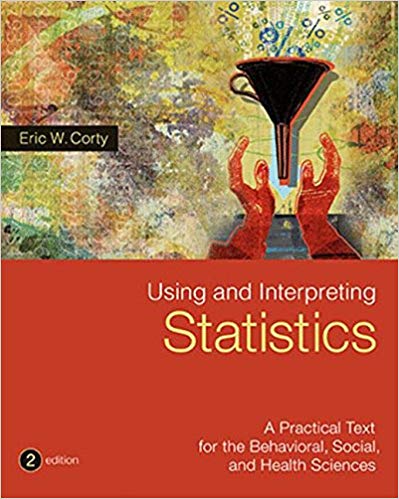The very last question in this book is a challenging one. It is rare that a researcher
Question:
The very last question in this book is a challenging one. It is rare that a researcher does a study that involves just one statistical analysis. Usually, there are multiple dependent variables and a branching series of questions and analyses. Here is an example. An infectious disease specialist believes she has developed a vaccine for the common cold. In order to test its efficacy, she designs a study. As a first step, potential participants call in and provide demographic information (age, sex, race) and complete an interval-level measure of general physical health. After this, they learn more about the study and about 40% of those who originally called decide that they wish to take part in the study.
The actual study is a double-blind study in which the volunteers will be inoculated either with the active vaccine or a placebo. At the end of the first week, each participant completes a side effect checklist, which counts how many side effects each person has experienced. For the next 12 months, the research team will keep track of each participant and whether he or she contracts a cold. If a participant contracts a cold, the research team will note how many days have elapsed from the vaccine until the cold. In addition, the researchers will assess the severity of the cold in terms of two dimensions: (1) measuring how many days the cold lasts, and (2) having the cold sufferers report how congested they felt on an ordinal scale. For each scenario below, decide which statistical test or tests should be used to answer the research question. Be aware many of these questions involve multiple dependent variables and multiple analyses.
a. The researcher wants to know if those who volunteered for the study differ from those who chose not to volunteer.
b. The researcher wants to know if her sample of volunteers is demographically similar to the U.S. population.
c. Did the active vaccine have more side effects than the placebo?
d. The primary measure of the vaccine’s effectiveness is whether or not people in the experimental group, compared to the control group, did or did not contract a cold during the year after the vaccine. How should she answer this question?
e. Secondary measures of the vaccine’s effectiveness were, for those who contracted colds, how long the cold lasted and how sick they were. What tests should the researcher do to answer these questions?
f. For the control group participants, the researcher was interested in the relationship between their general physical health and contracting a cold. How can this question be answered?
g. For the control group participants who contracted a cold, the researcher was interested in the relationship between general physical health and the severity of the cold. How should she answer this question?
In this series of questions, there are no headings that tell which flowchart to use. Plus, some gaps occur in the flowchart. For example, if the scenario has two dependent samples with an ordinal-level dependent variable, there is no such test in the flowchart. Tests exist for such situations; they just weren’t covered in this book. So, if a scenario in this series calls for a “missing” test, just write, “No such test in book” as your answer.
Step by Step Answer:






